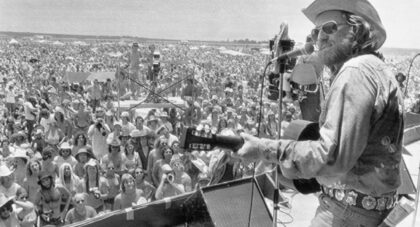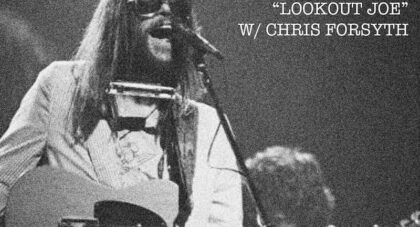If Charlie Christian was a gunslinger, there’d be a Whole Lot of dead copycats.
Sure Charles Mingus was referring to Charlie Parker with the "dead copycats" line, but he could have just as well been talking about Charlie Christian. Christian was a pioneering guitar player who was a prime character in the birth of bebop, particularly in the years between 1939-1941, and is acknowledged for transforming the guitar from merely a rhythmic instrument into a line-leading and soloing one.
But innovation does not occur in a vacuum and an ocean away Django Reinhardt was doing his own work playing single note runs, swinging absurdly with his Lester Young-like lyricism. That Django only had three fingers on his chording hand could have something to do with it, necessity being the mother of invention and all.
Is it possible Charlie Christian could have encountered Django Reinhardt? One of Charlie Christian's closest allies, Teddy Hill, the manager of the after-hours joint Minton's Playhouse in Harlem, and a bandleader in his own right, would joke, "We're going to bring that Django over here, and he'll blow you off the stand." According to Hill, Christian would just smile and mimic a few typical Django phrases on his guitar. The guitarist Mary Osborne recalled seeing Christian play Django's version of "St. Louis Blues" note for note before breaking into his own style. A direct Django Reinhardt connection is fascinating but implausible, each other’s innovation occurring independently and concurrently.
The genius of Charlie Christian is not just what he did on the electric guitar but the way he did it, creating long flowing improvisations, repeating mini phrases to build tension, and slowly releasing the valve for the remainder of his solo. Listen for the way he repeats notes or phrases in the first few bars of a solo, rotating back to them in short succession, referencing the song's theme while pulling away from it. For example, Christian's solo on "Airmail Special" with Benny Goodman's band, beginning around :32. Once you're aware of this dramatic device it's impossible not to notice in subsequent listening.
Only the good shit. Aquarium Drunkard is powered by its patrons. Keep the servers humming and help us continue doing it by pledging your support.
To continue reading, become a member or log in.


